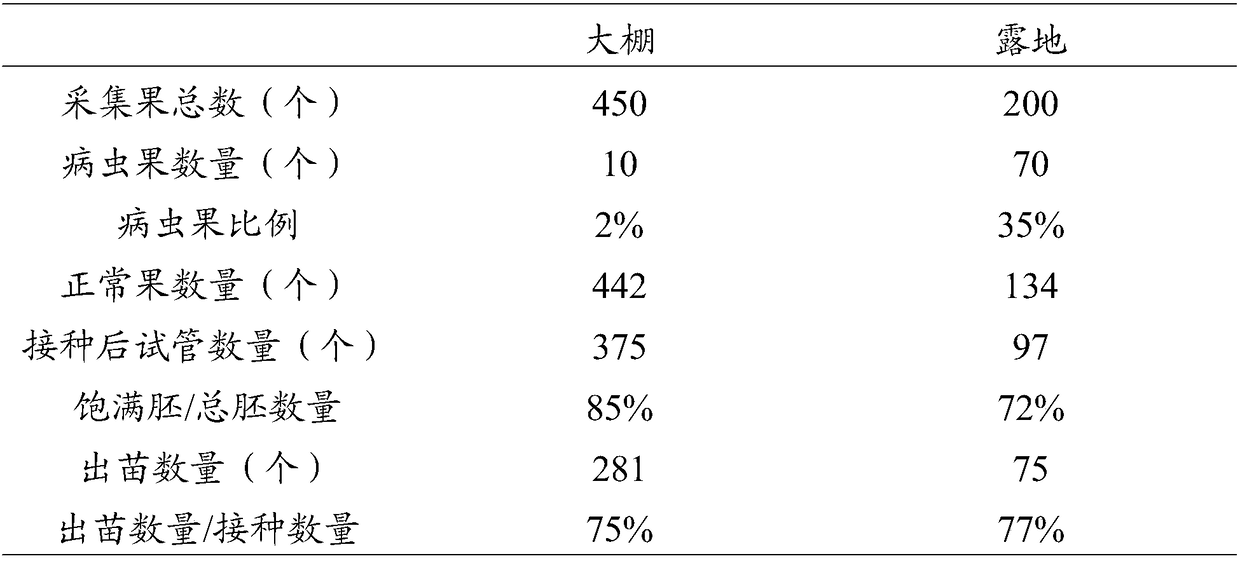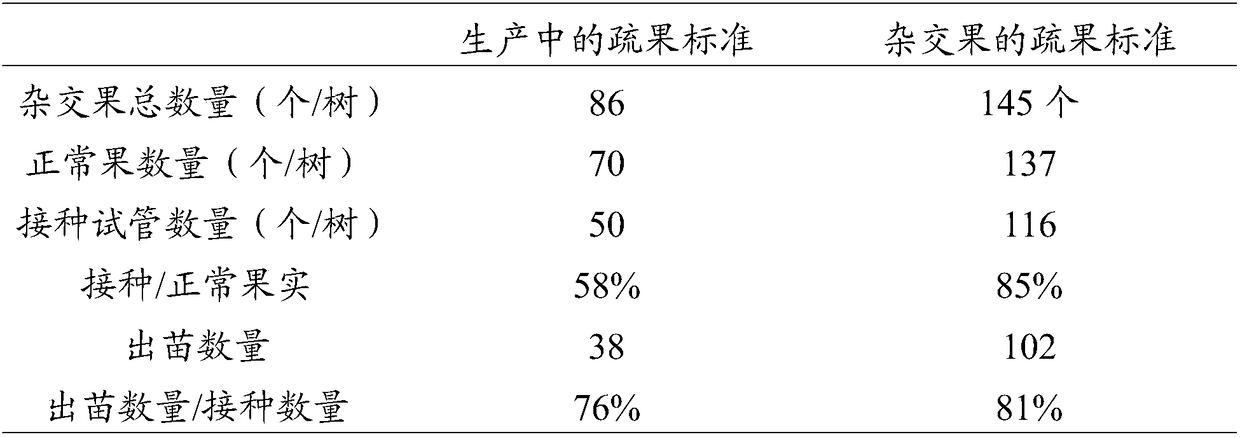Obtaining method of nectarine inoculation embryo
A technology for nectarines and fruits, which is applied in the field of obtaining nectarine inoculated embryos, which can solve the problems of unstable temperature in the flowering period, increased rot rate, and brown rot incidence, so as to speed up the breeding process, increase the emergence rate, and reduce the rot rate. Effect
- Summary
- Abstract
- Description
- Claims
- Application Information
AI Technical Summary
Problems solved by technology
Method used
Image
Examples
Embodiment 1
[0043] The following process is carried out in the greenhouse. During the flowering period, the temperature of the greenhouse should be controlled at 20°C, especially at noon when the temperature is high, the skylight should be opened in time to cool down.
[0044] 1) Select a robust nectarine tree in the greenhouse as the hybrid female parent. The hybrid female parent is 'Huyou 018', 4 years old, 3 in number, and the first flowering date is March 24; the hybrid male parent is 'Huyou 018'. You 004', the tree is 4 years old, and the first flowering period is March 22.
[0045] 2) On March 22, the anthers of Huyou 004 were collected, dried in the shade with silica gel, and the pollen of the male parent was obtained.
[0046] 3) Carry out the first pollination on March 25, at this time, 5% of the flowers are open, and 30% of the buds are in the balloon stage. Remove the bloomed flowers and pollinate the buds in the balloon stage. Pinch them off together, and infuse the pollen of...
Embodiment 2
[0058] The following process is carried out in the greenhouse. During the flowering period, the temperature of the greenhouse should be controlled at 20°C, especially at noon when the temperature is high, the skylight should be opened in time to cool down.
[0059] 2) Select a strong nectarine tree in the greenhouse as the hybrid female parent. The hybrid female parent is 'Huyou 018', 4 years old, 5 in number, and flowering on March 20; the hybrid male parent is Zhongyou 9 The tree is 4 years old, and the flowering period is March 16.
[0060] 2) The large flower buds of Zhongyou No. 9 were collected, the anthers were taken out, spread on a white paper, and dried under a desk lamp for 3 hours to obtain pollen of the male parent.
[0061] 3) The first pollination is at the initial flowering stage, when 5% of the flowers are open, and 30% of the buds are in the balloon stage, the blooming flowers are removed, and the flower buds in the balloon stage are pollinated. The method of...
Embodiment 3
[0072] Except that implementation process is carried out on the open field, all the other methods are consistent with embodiment 2.
PUM
| Property | Measurement | Unit |
|---|---|---|
| Diameter | aaaaa | aaaaa |
Abstract
Description
Claims
Application Information
 Login to View More
Login to View More - R&D
- Intellectual Property
- Life Sciences
- Materials
- Tech Scout
- Unparalleled Data Quality
- Higher Quality Content
- 60% Fewer Hallucinations
Browse by: Latest US Patents, China's latest patents, Technical Efficacy Thesaurus, Application Domain, Technology Topic, Popular Technical Reports.
© 2025 PatSnap. All rights reserved.Legal|Privacy policy|Modern Slavery Act Transparency Statement|Sitemap|About US| Contact US: help@patsnap.com



